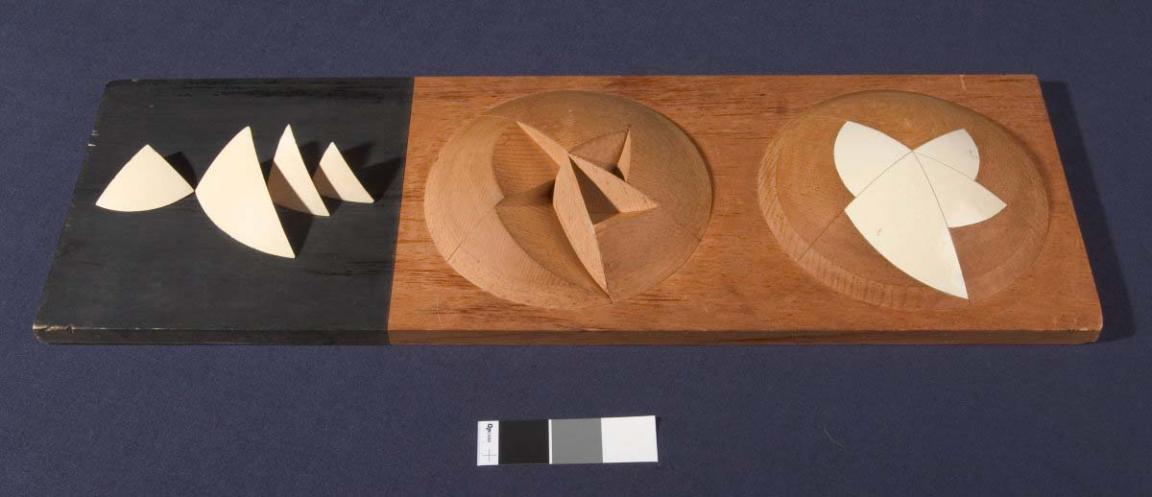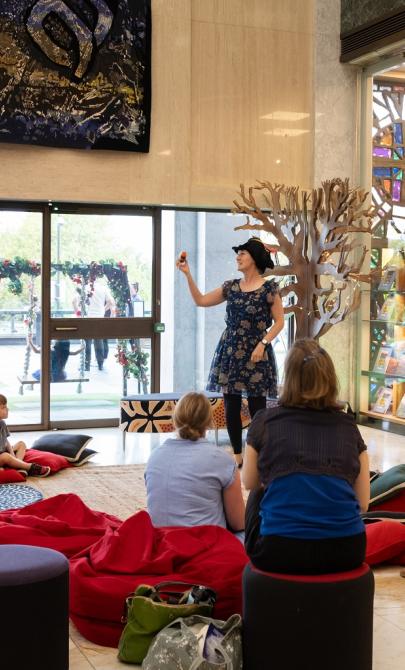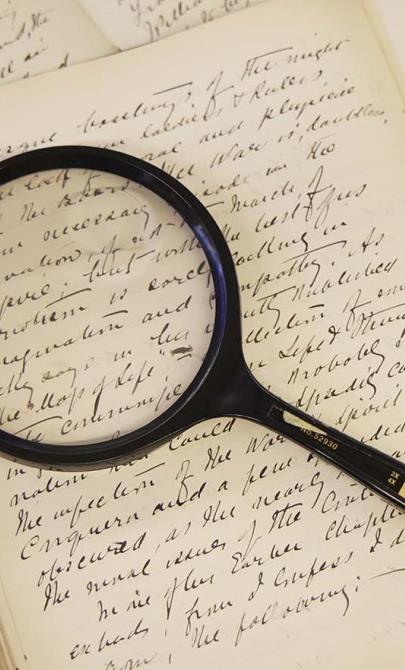Designing the Sydney Opera House
A revolutionary design
Utzon’s wooden design model for the Sydney Opera House is part of a collection presented to the National Library of Australia by Professor Henry Ingram Ashworth (1907–1991). Ashworth was one of the judges in the design competition and was involved in the building’s construction.
Utzon’s design was ahead of its time. To realise his vision, engineers had to devise untried structural solutions throughout the construction. It was the era before computer-aided design, and the architectural model shows how Utzon approached and resolved a complex construction challenge.
Utzon’s assistant, Helge Hjertholm, recalled that early one morning in 1961, Utzon entered his office with an orange. By slicing spherical triangles from the peel, Utzon could form a variety of shell shapes. He realised that all segments of the roof could be derived from a single sphere. These shell segments could be separated into individual components, prefabricated and assembled on site.

Jørn Utzon, [Architects model for the geometry of the Sydney Opera House shells] [realia], nla.gov.au/nla.obj-139591596
Jørn Utzon, [Architects model for the geometry of the Sydney Opera House shells] [realia], nla.gov.au/nla.obj-139591596
Learning activities
Activity 1: Designing buildings and public spaces
Begin with a class discussion about the process of design and the role of architects. How do buildings happen? Use the following questions to explore the design of significant public buildings:
- Why are some buildings less traditional in design than others?
- How important is the way a building looks?
- What else do architects consider when designing a building?
Ask students to research and create a mood board of architecturally significant buildings around the world and their designers. These could include the Guggenheim Museums (New York City, Bilbao, Abu Dhabi), La Sagrada Familia in Spain or the Centre Pompidou in France.
Watch The ABC of Architects (Vimeo) as a class and see how many of the students’ selected buildings appear in the video.
Activity 2: Understanding architectural models
Watch the video about the Architect’s model for the geometry of the Sydney Opera House shells (1961). Use the following questions to guide class discussion and inquiry:
- What materials were used in this object’s construction?
- How did it come to be part of the National Library’s collection?
- How was the model constructed?
Ask students to research Jørn Utzon and the international competition to design a world-class performing arts centre in Sydney.
Digital Classroom: Jorn Utzon’s Opera House Model
Activity 3: Design and inspiration
Ask students to cut up an orange and consider how this shape may have influenced Jørn Utzon’s design for the Sydney Opera House. What other natural forms or ideas might have contributed to the design? What does the shape of the Opera House remind them of?
Activity 4: World Heritage listing
As a class, explore what it means to be on the UNESCO World Heritage List. Why do students think the Sydney Opera House is included?
Visit the Department of Climate Change, Energy, the Environment and Water website to read the criteria for World Heritage Listing. Ask students to suggest a place—natural or built—that they think is worthy of inclusion. Select one or two suggestions and discuss how those places might meet the criteria.
Activity 5: The Opera House today
Why is the Sydney Opera House significant to Australia today? Visit the Opera House website as a class and explore the ‘Events’ page to better understand how the building is used.
Activity 6: Timeline of Bennelong Point
Ask students to search for historical images of Bennelong Point, including photographs, paintings or maps. Use these to create a class visual timeline showing how the area has changed from the time of European arrival to the present. Discuss how the changes reflect shifts in land use, architecture and cultural significance.
Activity 7: Design competition
Hold a class design competition. You could choose a specific purpose—such as a new school library or gymnasium—or allow students to write their own design brief for a new building. In preparing their designs, ask students to consider:
- how the building would be used
- who it would serve
- what materials might be used in its construction.
Encourage students to present their designs with sketches, models or digital renderings, and to explain their choices to the class.



